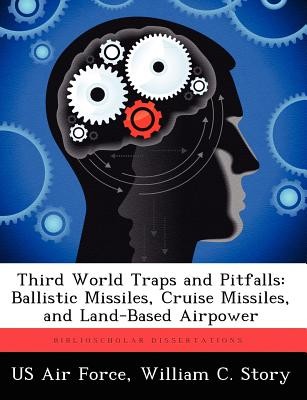
- We will send in 10–14 business days.
- Author: William C Story
- Publisher: BiblioScholar
- ISBN-10: 1249328446
- ISBN-13: 9781249328445
- Format: 18.9 x 24.6 x 0.4 cm, softcover
- Language: English
- SAVE -10% with code: EXTRA
Reviews
Description
Two examples from twentieth-century conflicts demonstrate the potential that missiles possess to disrupt an opponent's land-based airpower and achieve significant political consequences. Iraq's use of Scud ballistic missiles in the 1991 Persian Gulf War produced nearly instantaneous political effects. The Scuds did not threaten the coalition military forces opposing Saddam Hussein, but instead threatened the existence of the coalition itself by nearly bringing Israel into the war. Negating this threat demanded an urgent response from land-based airpower, and large numbers of coalition aircraft were forced to perform a new mission: Scud Hunting. Almost 50years before Desert Storm, the Allies in World War II had faced a similar threat from the V-1 and V-2. Thousands of sorties were diverted to bomb missiles that were chiefly fired at London and Antwerp. In both conflicts, coalition and Allied forces possessed enough airpower that the diversion did not prevent them from performing other necessary missions. Yet, in the future, as the United States Air Force (USAF) dwindles in numbers, the ability of land-based airpower to deal with the missile threat becomes problematic. In addition, the improved capabilities of ballistic and cruise missiles threaten airpower's ability to achieve the staple of modern combat operations-air superiority. The increased range and refined accuracy of missiles offers third world nations a chance to develop airpower on the cheap, and the missile forces created may well stymie America's ability to apply "conventional" airpower in a crisis. Because of the lack of success in thwarting the missile threat in the past, combined with the projected capability of future missiles and the continued "downsizing" of the Air Force, American leaders must carefully consider whether they possess the wherewithal to commit airpower on a truly global scale.
EXTRA 10 % discount with code: EXTRA
The promotion ends in 17d.18:28:50
The discount code is valid when purchasing from 10 €. Discounts do not stack.
- Author: William C Story
- Publisher: BiblioScholar
- ISBN-10: 1249328446
- ISBN-13: 9781249328445
- Format: 18.9 x 24.6 x 0.4 cm, softcover
- Language: English English
Two examples from twentieth-century conflicts demonstrate the potential that missiles possess to disrupt an opponent's land-based airpower and achieve significant political consequences. Iraq's use of Scud ballistic missiles in the 1991 Persian Gulf War produced nearly instantaneous political effects. The Scuds did not threaten the coalition military forces opposing Saddam Hussein, but instead threatened the existence of the coalition itself by nearly bringing Israel into the war. Negating this threat demanded an urgent response from land-based airpower, and large numbers of coalition aircraft were forced to perform a new mission: Scud Hunting. Almost 50years before Desert Storm, the Allies in World War II had faced a similar threat from the V-1 and V-2. Thousands of sorties were diverted to bomb missiles that were chiefly fired at London and Antwerp. In both conflicts, coalition and Allied forces possessed enough airpower that the diversion did not prevent them from performing other necessary missions. Yet, in the future, as the United States Air Force (USAF) dwindles in numbers, the ability of land-based airpower to deal with the missile threat becomes problematic. In addition, the improved capabilities of ballistic and cruise missiles threaten airpower's ability to achieve the staple of modern combat operations-air superiority. The increased range and refined accuracy of missiles offers third world nations a chance to develop airpower on the cheap, and the missile forces created may well stymie America's ability to apply "conventional" airpower in a crisis. Because of the lack of success in thwarting the missile threat in the past, combined with the projected capability of future missiles and the continued "downsizing" of the Air Force, American leaders must carefully consider whether they possess the wherewithal to commit airpower on a truly global scale.


Reviews